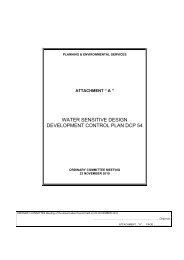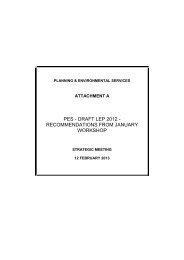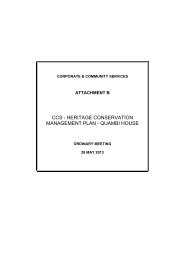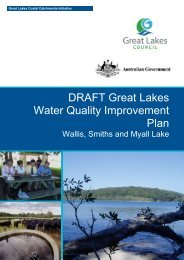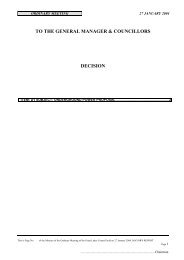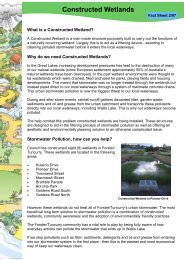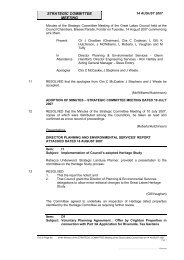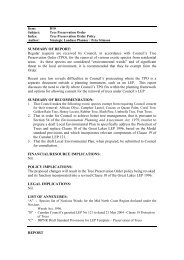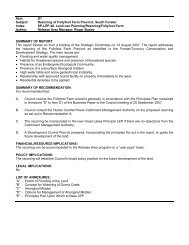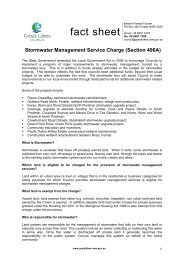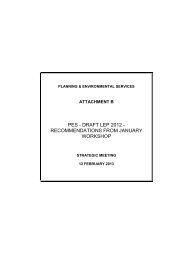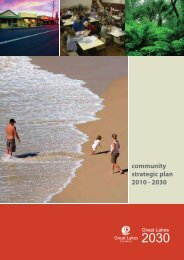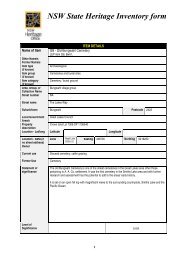13.2 The Wallis Lake Estuary Management Committee - Great Lakes ...
13.2 The Wallis Lake Estuary Management Committee - Great Lakes ...
13.2 The Wallis Lake Estuary Management Committee - Great Lakes ...
Create successful ePaper yourself
Turn your PDF publications into a flip-book with our unique Google optimized e-Paper software.
<strong>Wallis</strong> <strong>Lake</strong> <strong>Estuary</strong> <strong>Management</strong> Plan<br />
Page No<br />
13 APPENDICES<br />
13.1 A summary of existing plans, strategies and studies related to the WLEMP ................................ 118<br />
<strong>13.2</strong> <strong>The</strong> <strong>Wallis</strong> <strong>Lake</strong> <strong>Estuary</strong> <strong>Management</strong> <strong>Committee</strong> ....................................................................... 128<br />
13.3 Submissions and consultations ..................................................................................................... 129<br />
13.4 Letter to landholders...................................................................................................................... 131<br />
13.5 Issues raised during public meeting and with Forster LALC ......................................................... 132<br />
13.6 Background to the <strong>Wallis</strong> <strong>Lake</strong> region........................................................................................... 133<br />
13.7 Best practice guidelines for human - dolphin interactions ............................................................. 136<br />
13.8 Considerations for assessing boat launching facilities .................................................................. 137<br />
Figures<br />
Figure 1.1 <strong>The</strong> <strong>Estuary</strong> <strong>Management</strong> Process.................................................................................................... 2<br />
Figure 2.1 <strong>The</strong> <strong>Wallis</strong> <strong>Lake</strong> <strong>Estuary</strong> .................................................................................................................... 6<br />
Figure 2.3 <strong>Management</strong> area A: Island/entrance area........................................................................................ 9<br />
Figure 2.4 <strong>Management</strong> area B: <strong>Wallis</strong> <strong>Lake</strong> Water Body ................................................................................ 11<br />
Figure 2.5 <strong>Management</strong> area C1: Muddy Creek............................................................................................... 13<br />
Figure 2.6 <strong>Management</strong> area C2: Pipers Bay, Pipers Creek and Forster Keys................................................ 14<br />
Figure 2.7 <strong>Management</strong> area D: Wallamba River............................................................................................. 16<br />
Figure 2.8 <strong>Management</strong> area E: Coolongolook and Wang Wauk Rivers.......................................................... 18<br />
Figure 2.9 <strong>Management</strong> area F: Wallingat River .............................................................................................. 19<br />
Figure 4.1 Locations for creek rehabilitation ..................................................................................................... 24<br />
Figure 4.2 Sites for baseline water quality testing............................................................................................. 31<br />
Figure 4.3 Sites of monthly water samples for faecal coliform testing by NSW Food Authority........................ 33<br />
Figure 4.4 Sites of monthly phytoplankton sampling by NSW food Authority ................................................... 33<br />
Figure 4.5 SEPP14 and other wetland areas of <strong>Wallis</strong> <strong>Lake</strong> with high conservation value .............................. 39<br />
Figure 4.6 Shallow seagrass beds to consider including in ‘proceed with care’ zone....................................... 41<br />
Figure 4.7 Sites of Chaetomorpha sp blooms in Pipers Creek and Microdictyon sp blooms<br />
in Breckenridge Channel ................................................................................................................. 45<br />
Figure 4.8 Location of sites for the seagrass monitoring program.................................................................... 47<br />
Figure 4.9 Sites of fishways to be installed and site of fish kills in the upper Wallamba River ......................... 51<br />
Figure 4.10 Marine Protected Areas in NSW and boundaries of the Manning Bioregion for<br />
the Bioregional Assessment............................................................................................................ 52<br />
Figure 4.11 Conservation zonings 7a and 7b on the islands and <strong>Wallis</strong> <strong>Lake</strong> foreshores.................................. 64<br />
Figure 4.12 Areas on islands experiencing considerable erosion....................................................................... 66<br />
Figure 4.13 Location of foreshore reserves ........................................................................................................ 68<br />
Figure 4.14 Informal foreshore road at Green Point ........................................................................................... 72<br />
Figure 4.15 Location of the Green Cathedral...................................................................................................... 79<br />
Figure 4.16<br />
Figure 4.17<br />
Figure 4.18<br />
Suggested locations for signage identifying islands and for additional channel<br />
markers ........................................................................................................................................... 81<br />
Area to restrict waterskiing, wakeboarding and other power boat recreational<br />
activities to on the Wallamba River ................................................................................................. 83<br />
Example of an educational diagram illustrating the ecological importance of<br />
Seagrass beds as a food source and as habitat for juvenile fish .................................................... 89<br />
Figure 6.1 Schematic diagram of the artificial wetlands on the K-leg drainage line........................................ 100<br />
Figure 6.2 Sites of annual shellfish samples for pesticide and metals testing by NSW Food Authority.......... 100<br />
Figure 8.1 <strong>The</strong> planning framework for the maintenance and improvement of estuarine health .................... 109<br />
Figure 9.1<br />
Legislation, policies and conventions that make up the natural resource planning<br />
framework and can be used as tools to implement the WLEMP and WLCMP.............................. 110<br />
iii




